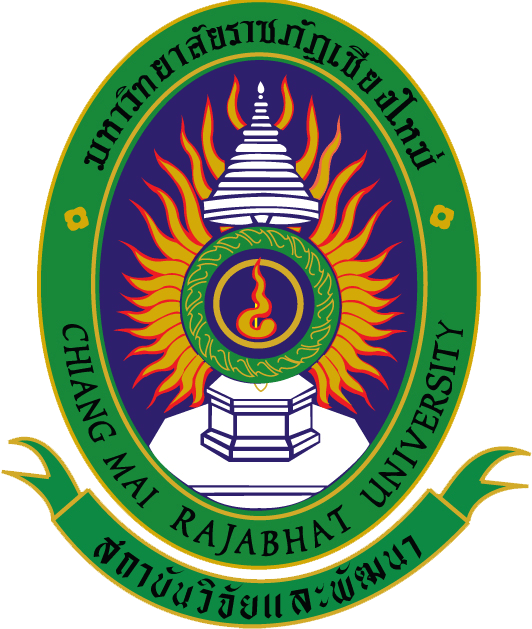
ระบบสารสนเทศงานวิจัย สถาบันวิจัยและพัฒนา มหาวิทยาลัยราชภัฏเชียงใหม่
Research Information System(RIS)
การวิจัยเพื่อเพิ่มประสิทธิภาพการผลิตสินค้าเกษตรของชุมชนจังหวัดเชียงใหม่ให้มีศักยภาพการแข่งขันในอาเซียน ปีที่ 3
รองศาสตราจารย์ ดร.ภัทรวุฒิ สมยานะ
คณะวิทยาการจัดการ
คำสำคัญ :
เลขทะเบียน :
1073-62-MGT-NRCT
บทคัดย่อ
การวิจัยมีวัตถุประสงค์เพื่อหาแนวทางในการเพิ่มประสิทธิภาพการผลิตสินค้าเกษตรของชุมชนจังหวัดเชียงใหม่ ให้มีศักยภาพการแข่งขันในอาเซียนบนพื้นฐานปรัชญาของเศรษฐกิจพอเพียง อาศัยการวิจัยเชิงคุณภาพในการวิเคราะห์บริบทชุมชน และศักยภาพกลุ่มเกษตรกร ด้วยการวิเคราะห์ SWOT เพื่อให้ทราบปัจจัยที่ส่งเสริมและไม่ส่งเสริมศักยภาพของกลุ่ม ร่วมกับการ Focus group เพื่อหาแนวทางในการเพิ่มประสิทธิภาพการผลิตของเกษตรกร และการวิเคราะห์เชิงปริมาณ ในการวิเคราะห์ค่าธาตุอาหารในดิน และการวัดประสิทธิภาพเชิงเปรียบเทียบก่อนและหลังการนำเอาปรัชญาของเศรษฐกิจพอเพียงไปใช้ในการผลิตพืชที่สำคัญของจังหวัดเชียงใหม่ทั้ง 6 ชนิด ได้แก่ ลำไย เสาวรส ข้าวไรซ์เบอร์รี่ ข้าวหอมมะลิ 105 ฝรั่ง และส้ม ผลการวิจัยพบว่า กลุ่มเกษตรกรผู้ผลิตสินค้าเกษตรของจังหวัดเชียงใหม่ที่มีศักยภาพในการผลิต และสามารถประยุกต์ใช้ปรัชญาของเศรษฐกิจพอเพียงได้ 3 แนวทาง ได้แก่ 1) การประยุกต์ใช้ปรัชญาของเศรษฐกิจพอเพียงด้านเทคนิคการจัดการดิน จากการวิเคราะห์ค่าธาตุอาหารในดินพบว่าดินมีความอุดมสมบูรณ์ต่อการผลิตในระดับต่ำถึงปานกลางจึงเสนอแนะให้ควรปรับปรุงดินเป็นอย่างมาก โดยใช้ปุ๋ยอินทรีย์ ซึ่งเกษตรกรสามารถปฏิบัติได้โดยใช้เศษวัสดุเหลือใช้ทางการเกษตรในชุมชน เพื่อลดรายจ่ายทางการเกษตร รวมถึงการเพิ่มปริมาณอินทรียวัตถุในดินให้มากขึ้น เนื่องจากเกษตรกรทำการผลิตหลายรอบแต่ไม่มีการพักดินเลยโดยเฉพาะการปลูกลำไยและข้าวการเพิ่มปริมาณอินทรียวัตถุในดินจะช่วยให้ประสิทธิภาพการผลิตของเกษตรกรเพิ่มสูงขึ้นในระยะยาว 2) การประยุกต์ใช้ปรัชญาของเศรษฐกิจพอเพียงด้านเทคนิคการผลิตเพื่อเพิ่มประสิทธิภาพการผลิต พบว่ามี 4 เทคนิค ได้แก่ เทคนิคการคัดเลือกพันธุ์ เทคนิคการปรับเปลี่ยนระบบการผลิตเป็นการผลิตแบบอินทรีย์ เทคนิคการจัดการผลิต และเทคนิคการจัดการหลังการเก็บเกี่ยว 3) การประยุกต์ใช้ปรัชญาของเศรษฐกิจพอเพียงด้านการลดต้นทุนเพื่อเพิ่มประสิทธิภาพการผลิต การวิจัยสามารถเพิ่มประสิทธิภาพการผลิตได้เพิ่มขึ้นเฉลี่ยร้อยละ 138.52 แยกตามชนิดของสินค้าเกษตร โดยประสิทธิภาพการผลิตฝรั่ง มีค่าประสิทธิภาพมากที่สุด ร้อยละ 210.80 รองลงมาคือ เสาวรส มีค่าประสิทธิภาพร้อยละ195.72 ส้ม มีค่าประสิทธิภาพร้อยละ 177.95 ข้าวไรซ์เบอร์รี่ มีค่าประสิทธิภาพร้อยละ 123.32 ข้าวหอมมะลิ 105 มีค่าประสิทธิภาพร้อยละ 112.57 แต่ต่ำสุดและน่าเป็นห่วงคือลำไย มีค่าประสิทธิภาพเพียงร้อยละ 10.77 ซึ่งภาครัฐต้องให้ความสำคัญต่อการส่งเสริมเพื่อพัฒนาเป็นสินค้าที่สำคัญของจังหวัดเชียงใหม่ต่อการแข่งขันในอาเซียนมากขึ้น
Abstract
This research aims to find guidelines for enhancing the effectiveness of agricultural production in Chiang Mai Community to compete in ASEAN on a basis of sufficiency economy. Qualitative research was conducted in the analysis of community context and SWOT analysis of farmers’ potential to identify factors that promoted and interfered the potential. The focus group was an additional methodology to increase the production efficiency of the farmers. Quantitative research was accomplished in soil nutrient analysis. The measurement of competitive performance before and after the introduction of sufficiency economy for production the six major plants in the province, including longan, passion fruit, riceberry rice, jasmine rice 105, guava, and orange. The results showed that the farmers of the province who have the potential to produce and apply the sufficiency economy in three guidelines as follows 1) application of sufficiency economy in soil management In soil nutrient analysis, it was found that the soil has a low-to-medium fertile production, thus it is recommended to improve the soil with organic fertilization. The farmers are able to use agricultural residue in the community to reduce agricultural expenditure as well as to increase soil organic matter. Since the farmers have been producing many times without land fallow in particular, longan and rice, therefore, increase the amount of organic matter in the soil will help them to increase the production efficiency in the long run 2) application of sufficiency economy in production techniques to increase the production efficiency There are four techniques, i.e. strain selection techniques, modification technique of organic production, production management techniques, and postharvest management techniques. 3) application of sufficiency economy for cost reduction to increase production efficiency The research were able to increase the production efficiency value in an average 138.52%. As categorised on a basis of agricultural product, the plant production efficiency values ranging from to highest to the lowest values were 210.80% of guava, 195.72% of passion fruit, 177.95% of orange, 123.32% of riceberry rice, 112.57% of jasmine rice 105, and 10.77% of longan. The government has to concern on the promotion of longan, which is the key product of Chiang Mai to more ASEAN competition.
ไฟล์งานวิจัย
2. AEC 1 กิตติกรรมประกาศ 62.pdf
ข้อมูลการตีพิมพ์
ชื่อบทความ :
แหล่งที่ตีพิมพ์ :Phranakhon Rajabhat Research Journal (Humanities and Social Science) Vol.15 No.2 (July - December 2020) หน้า 33 - 42
ปีที่ตีพิมพ์ :2563
147 18 ธ.ค. 2561
สำนักงานคณะกรรมการวิจัยแห่งชาติ (วช.)
196 Paholyotin Rd., Chatuchak, Bangkok 10900
0-2561-2445